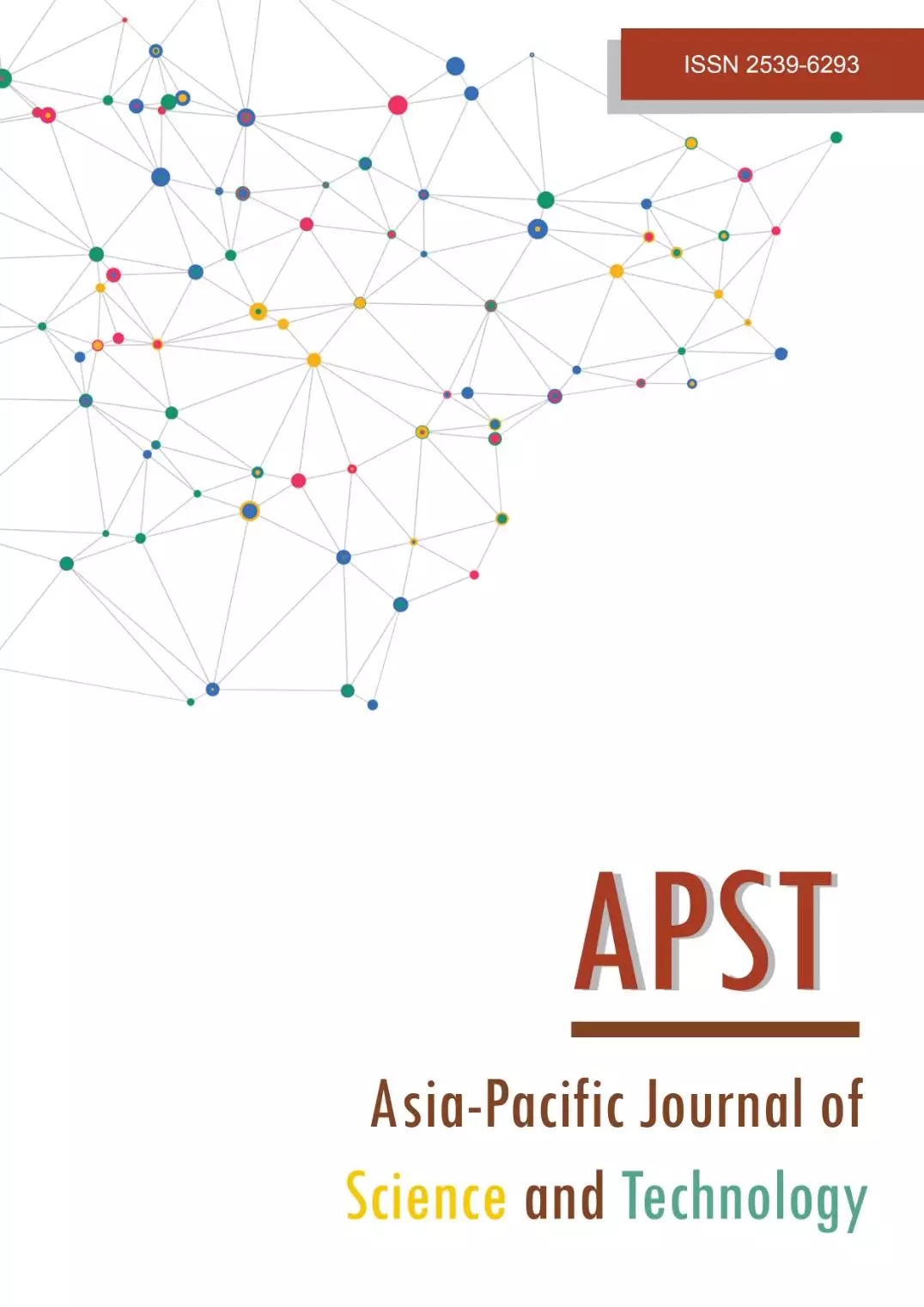Preliminary conceptual design of borehole disposal facility for disused sealed radioactive sources at Serpong Nuclear Center-Indonesia
Main Article Content
Abstract
Borehole disposal facility is planned to be designed by the Center for Radioactive Waste Technology-National Nuclear Energy Agency of the Republic of Indonesia to dispose the Disused Sealed Radioactive Sources (DSRS). Up to now, the DSRS is still stored safely in the interim storage facilities at Serpong Nuclear Center. Most DSRS come from the industry and hospital sectors. Until 2019, about 3031 pieces of DSRS are being stored at the interim storage facilities in the 200L drum shells and 350L/950L concrete shells. The proposed facility is to accommodate the category 3-5 DSRS. Borehole disposal facilities are planned to be placed at a depth of about 100 m, on the clay formation. Several factors were taken into account in preparing the conceptual design of the borehole disposal facility. Multiple barrier systems are used in the facility. Passive and natural barriers are used to isolate the waste packages from the biosphere. The barriers also provide an effective containment system for long-term safety and function to limit the possibility of human intrusion (security and safety) to the facility. The aim of the paper is to explain the description of the conceptual design of the borehole disposal that will be designed.
Article Details

This work is licensed under a Creative Commons Attribution-NonCommercial-NoDerivatives 4.0 International License.
References
International Atomic Energy Agency [Internet]. Vienna: The Organization; c1998–2021 [cited 2020 Jan 15]. Management of Disused Sealed Radioactive Sources. Available from: https://www.iaea.org/publicati ons/10582/management-of-disused-sealed-radioactive-sources.
International Atomic Energy Agency [Internet]. Vienna: The Organization; c1998–2021 [cited 2020 Jan 15]. Code of conduct on the safety and security of radioactive sources. Available from: https://www.iaeao rg/publications/6956/code-of-conduct-on-the-safety-and-security-of-radioactive-sources.
International Atomic Energy Agency [Internet]. Vienna: The Organization; c1998–2021 [cited 2019 Oct 10]. Inventory data of the radiation sources in use. Available from: https://www.iaea.org/sites/default/file s/national_report_of_indonesia_for_the_6th_review_meeting_-_english.pdf.
Cochran JR, Bennett DG, Degnan P, Grout C, Liebenberg G, Little R, et al. International implementation of IAEA’s borehole disposal concept for sealed radioactive sources. In: Berriochoa M, Shoemake J, editors. Proceeding of Waste Management 2018 Conference; 2018 March 18-22; Arizona, United States. New York: Curran Assoc. Inc.; 2018. p. 1-15.
Chamney L. Open-ended meeting of legal and technical experts on the implementation of the code of conduct on the safety and security of radioactive sources. Report of the Chairman. Vienna: International Atomic Energy Agency; 2017 June.
Muziyawati A. Inventory data of DSRS at PTLR Year 2019. Internal report. Serpong: Indonesia; 2019.
Report 2019.
Blerk VJ, Vivier JJ, Pirow P, Andreoli M, Heard R. The borehole disposal concept for spent sources. Vol. I: development and evaluation of the concept. Internal report. Pretoria: South Africa; 2000. Report No. GEA-1353.
International Atomic Energy Agency [Internet]. Vienna: The Organization; c1998–2021 [cited 2020 Jan 14]. Safety consideration in the disposal of disused sealed radioactive sources in borehole facilities, Tecdoc-1368. Available from: https://www-pub.iaea.org/MTCD/Publications/PDF/te_1368_web.pdf.
International Atomic Energy Agency [Internet]. Vienna: The Organization; c1998–2021 [cited 2020 Jan 16]. BOSS: Borehole disposal of disused sealed sources, Tecdoc-1644. Available from: https://www.iaea .org/publications/8207/boss-borehole-disposal-of-disused-sealed-sources.
S Sucipta. Environmental geology mapping of kawasan puspiptek serpong and the surrounding as a buffer for the demonstration disposal site. J Waste Manag Tech. 2014;17(2):31-42.
S Sucipta, Pratma HA. Planning and concept of borehole disposal technology for disposal of disused sealed radiation sources from using in health and industry. J Phys Conf. 2020;1436(1):1-12.
Sumantry T. Monitoring the depth and quality of groundwater on the demo disposal site year 2013, In: Setiawan B, G Gunandjar, Santoso S, Pujiastuti LK, et al, editors. PTLR Research Results and Activities in 2013; 2014; May 21-22; Serpong, Indonesia. Banten: Center for Radioactive Waste Technology; 2014. p.581-588
Setiawan R, S Sucipta. Monitoring of groundwater level and quality at demo plant disposal site in year 2017. In: B Budiyono, A Aisyah, B Setiawan, Rahayu DS, Ratiko R, Hikmat MC, et al, editors. Proceedings of PTLR Research Results and Activities in 2017; 2018; March 20-21; Serpong, Indonesia. Banten: Center for Radioactive Waste Technology; 2017.p.105-114
Syaeful H, S Sucipta. Determination of hydraulic conductivity coefficient in NSD site, Serpong, based on in-situ permeability test method. Eksplorium. 2013;34(1):35-50.
Salehe M, Kim CL. Borehole disposal concept: a proposed option for disposal of spent sealed radioactive sources in Tanzania. JNFCWT (Korean). 2013;11(4):293-301.
Vicente R. Disposal of disused sealed radiation sources in boreholes. In: Auclair K, Abbott H, editors. Waste Management 2007 Conference; 2007 Feb 25-March 1; Arizona. United States. New York: Curran Assoc. Inc.; 2008. p. 1-5.
Dawood AM, Glover ET, Essel P, Kyereme AY, Sakyi AG, Akortia E, et al. Borehole disposal concept for radioactive waste disposal-the GAEC project. Elixir Pollution. 2012;47:8752-8756.
International Atomic Energy Agency [Internet]. Vienna: The Organization; c1998–2021 [cited 2020 Jan 16]. Borehole disposal facilities for radioactive waste, SSG-1. Available from: https://www.pu
biaea.org/MTCD/Publications/PDF/Pub1418_web.pdf.
Cota S, Hiromoto G, Gharbieh H, Silva A. Preliminary post-closure safety assessment for a borehole-type repository for disused sealed radioactive sources in Brazil. Prog Nucl Energy. 2018;103:74-80
Robinson PC, Watson CE, Little RH. The borehole disposal concept scoping tool v2.0. The technical report. Oxfordshire: United Kingdom; 2016. Report No. QRS-3038B-2 v1.0.
International Atomic Energy Agency [Internet]. Vienna: The Organization; c1998–2021 [cited 2019 Aug 13]. Safety assessment methodologies for near surface disposal facilities Vol-I: Review and enhancement of safety assessment approaches and tools. Available from: https://www.pubiaea.org/MTCD/Publications
/PDF/ISAM/IAEA-ISAM-Vol1_web.pdf.
Setiawan B, Mayasari E, Meidhika S. Evaluation of radiocesium sorption in some materials as safety barrier system of radioactive waste disposal demonstration facility. Procedia Chem. 2015;16:445-450.
The Quintessa [Internet]. Oxfordshire: The Organization; c2021 [cited 2020 Jan 18]. AMBER 4.4 Reference guide, ver. 1.0. Available from: https://www.quintessa.org/software/AMBER.
Cheng JJ, Yu C. Using the RESRAD computer code to evaluate human health risks from radionuclides and hazardous chemicals. J Haz Mat. 1993;35:353-367
Lee YM, Hwang YS, Kang CH, Hahn PS. Nuclide transport calculation in near- and far-field of a reference HLW repository using AMBER. In: Tarnuzzer E, Lewis M, editors. Waste Management 2005 Conference; 2005 February 27-March 3; Arizona, United States. Arizona; WM Symposia, Inc; 2005. p.1-10.


